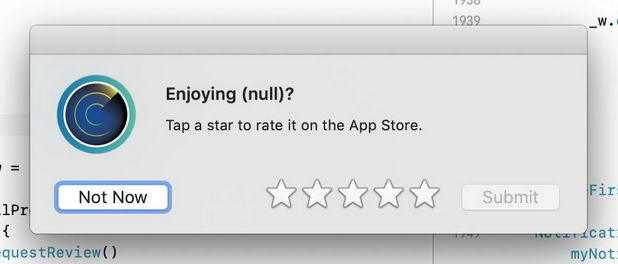Update: CurrentKey got approved.
The story:
The day after Christmas this year I spotted some bugs in my app, I fixed them – I also added a cool new feature, and submitted the new build to the App Store for review as soon as the holiday downtime was over. Within a few hours, my app went into “In review” status. “Awesome!” I thought. My last submission’s review only took about an hour and a half.
A few days passed and it was still “In review”. Very strange, but maybe it was a backlog caused by christmas break. Regardless, in the meantime I had found some other changes I had wanted to make to the app, so I pulled that build from review and submitted a new one. Again, within a couple hours my app had gone into “In review” status. Then began an epic waiting game that continues to this day. I noted it for the first time here.
A break from development, but not on my terms
Three separate builds of my app have been stuck “In review” collectively since December 28th.
I’ve been on the phone 3 times with apple developer customer support reps, basically there is a firewall between anyone you’re on the phone with and the app review team, so I have no idea why. To be clear, during this time, the app has not been Rejected by the reviewers. I have requested an expedited review twice and have been told that it’s been escalated to higher-ups. At the 3 week mark of “in review”, i resubmitted the build and have been, again “in review” for a few days – despite escalating that review too.
A week ago I wrote a blog post outlining my concerns in more detail.
I have fixes for users. The App Store is not letting me push them. So, I’m pulling my app from the Store until the review completes. I’m also looking into distributing the app outside the store. What I found is that the updating-framework of choice, Sparkle, is in a transition period (about to go to a 2.x release). I’m going to wait until that dust has settled before releasing the app outside the store officially.
Despite this app getting approved over a dozen times, I have a bad feeling about what’s happening with my app and the store. With no real intel on this at all, I suspect it’s going to eventually get rejected for some new BS reason that all other builds of this app were approved for. But that’s just a hunch, let’s see how all of this shakes out.
Here is how it looked before I pulled it. So long, and thanks for all the fish! 🐬

If you care about getting this app, or getting updates to this app, please let @Apple and @AppleSupport know about your concerns. Thank you!
During the downtime, I got to thinking
Needless to say, I haven’t been writing a lot of Swift code in the last month because of this app review logjam. That gave me time to reassess my opinion of technologies, projects, and platforms. Gatekeepers suck. My last post, Key takeaway from developing for the Mac App Store: it’s unreliable, got me permanently banned from reddit’s r/Apple community. Funnily enough, this post got unceremoniously deleted from r/Apple without explanation (after hitting #1 and getting 9.5K+ upvotes).
I don’t like permission to write opinions or serve software. That’s why my next project is going to be for the open web, a return my roots, in a sense.
To show that pulling my app wasn’t a capricious choice, here are some tweets showing a more complete timeline:
